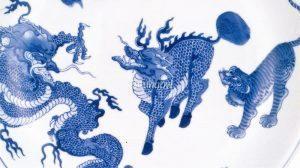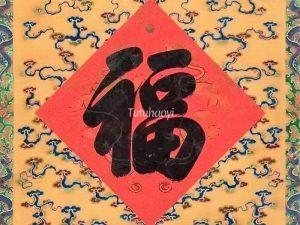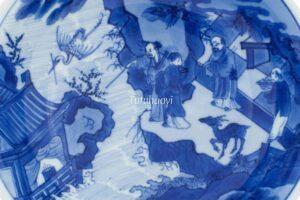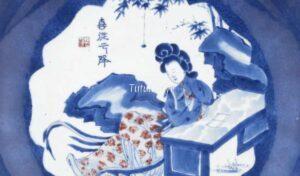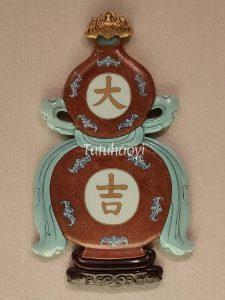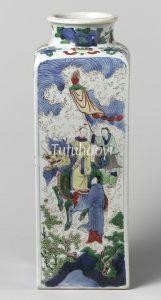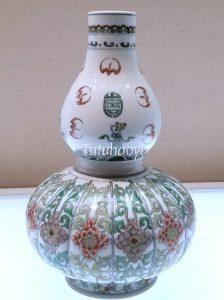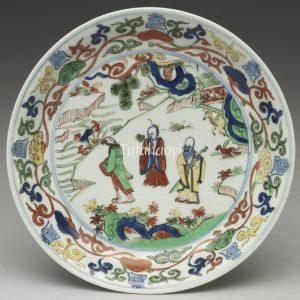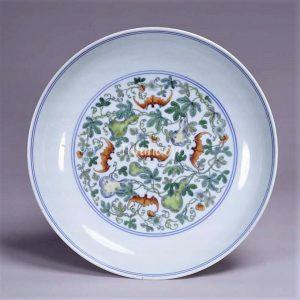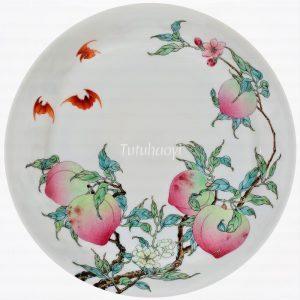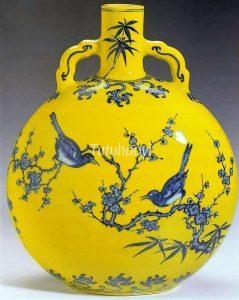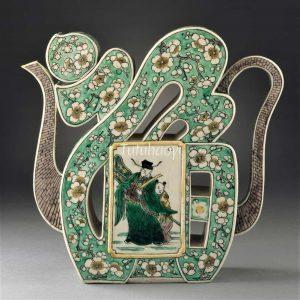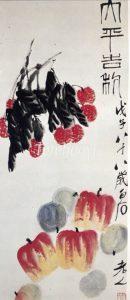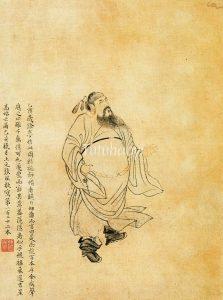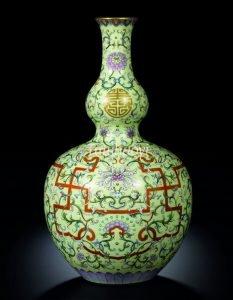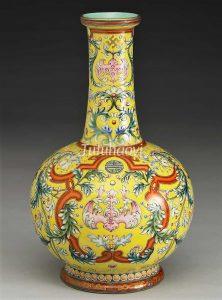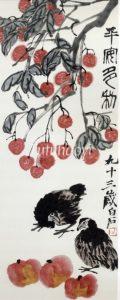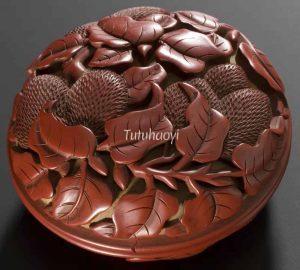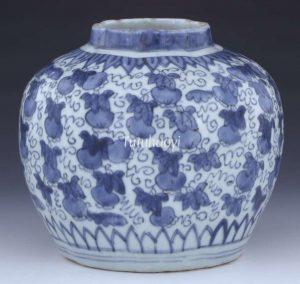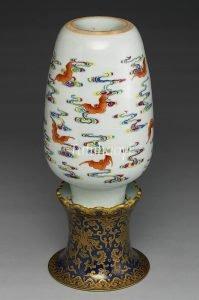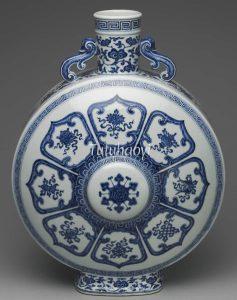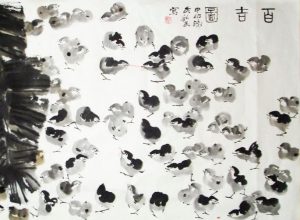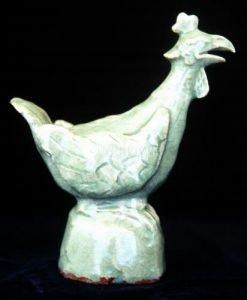Showing Results Containing
Dragon and phoenix are commonly seen motifs in Chinese visual culture. Tiger, qilin and tortoise, at the same time, are favoured creatures symbolic for auspice. But when the motifs of the above five beasts are combined together, they have more mea...
‘福 fu’, a Chinese character bearing an auspicious meaning of ‘good fortune’, has been used often in Chinese decorative arts. Dr Yibin Ni will tell you some interesting stories related to this character and how the intended meaning is represented i...
More often than not, traditional Chinese motifs or symbols are not receiving their deserved attention, being given simplistic or inadequate labels and inaccurate explanations in our museums, catalogues, or even scholarly writing. The treatment of ...
Are you afraid of small insects such as spiders? Why do we see this tidy dangling creature a popular motif used in traditional Chinese art? There is a secret here…
The Chinese character ‘大 da’ means ‘great’ or ‘grand’, and ‘吉 ji’ means ‘great fortune’ or ‘good luck’. In combination, ‘大吉 da ji’ expresses an auspicious wish of ‘May you enjoy great fortune’.
Related Pun Pictures:
This is a legendary story about the birth of Confucius (551 BCE – 479 BCE), the renowned philosopher from ancient China during the Spring and Autumn Period (770 BCE – 475 BCE).
According to The Family History of Confucius (孔子家语), Confucius’ father, Shuliang He (叔梁纥), had nine daughters but no sons from hi...
Pun Design :
Three + Goat
Punning Details:
– In an ancient Chinese literature, The Book of Change (I-Ching 易经) that can be traced back to Western Zhou (1046–771 BCE), there are sixty-four different hexagrams (gua
The figures of Three Star Gods are personified representation of Good Fortune, Prosperity, and
Guo Ziyi (郭子仪 697–781), a native of Huazhou 华州 (a county near present-day Xi’an 西安), was the most prominent general-statesman of the Tang dynasty. For the great part of nearly thirty years and under a succession of four different emperors, he played a key role in maintaining the stability of the country. He helped to
In the oracle bone script, the earliest form of the Chinese characters, the pictograph ‘福 (fu)’ consists of a pair of hands holding a wine jar in front of a sacred ancestral symbol. It means that, if the ancestors were pleased properly with right offerings, good fortune would come to bless the descendants.
<...The image of apples, in addition to cue a pun on the ideal of ‘universal peace’, may be combined with lychee or tangerine to form pi...
The flying mammal bat is called bian fu (蝙蝠) in Chinese. Image of the bat including its various stylised forms are often used in Chinese art to express an auspicious meaning, as ‘蝠 fu
In this scene, there are several Chinese longevity symbols such as the
Either the clockwise swastika 卐 or the counterclockwise sauwastika 卍 is used interchangeably in Chinese decorative arts as well as in some religious contexts. Sometimes, the two opposite versions can co-occur on the same occasion without making a difference in meaning. Swastika is a very old symbol in the cultures scatte...
When swastika is combined with the Chinese character Continue Reading
Either the clockwise swastika 卐 (sounding ‘wan’ 万) or the counterclockwise sauwastika 卍 is used interchangeably in Chinese decora...
Pun Design: Apples + Continue Reading
Also named leechee, lichee, lichi, or litchi (nut).
Lychee is a tall tropical evergreen tree of the soapberry family (Sapindaceae) native to southeastern China. It was recorded in the Xijing zaji (西京杂记, Miscellaneous Records of the Western Capital), a collection of short semi-historiographical stories fro...
Gourd (葫芦 hu lu) in Chinese is pronounced similar to ‘fu (福, fortune)’ and ‘lu (禄, wealth)’, therefore its image is often used as a pun picture referring fortune ...
Bats in Chinese is called bian fu (蝙蝠) or fu (蝠). The image of bats is often used to represent ‘good luck’ or ‘good fortune’ in Chinese decorativ...
The Eight Auspicious Emblems, also known as ‘ba bao’ (八宝, Eight Treasures), or ‘ba rui xiang’ (八瑞相, Eight Symbols of Good Fortune), are a set of symbols in traditional Tibetan Buddhism. These symbols are often depicted together, bringing positive energy, Continue Reading
Pun design:
Spider + descending from the sky
Punning mechanism:
‘Zhi zhu (蜘蛛, spider)’ has a nickname ‘xi zi (蟢子)’ or ‘xi zhu (喜蛛)’ meaning the ‘lucky one’ or ‘lucky spider’.
Its first character ‘xi 喜(蟢)’ for ‘happiness (good luck)’ is then combined with the ...
‘Ji 鸡’ is a generic name for cockerel, hen, and chick, and sounds the same as ‘ji 吉’ for ‘good fortune’. Thus, a picture of many chickens is used to represent ‘abundant good fortune’.
Related Pun Pictures:
A large Longquan pottery rooster sculpted on a rock sends good fortune to the receiver’s or owner’s family because da ji 大 鸡 for ‘large rooster’ sounds the sam...
The Chinese name for rooster or chicken is ji 鸡, which is a pun on ji 吉 ‘good fortune’. ‘Da’ is the Chinese adjective for ‘big’ or ‘grand’. Hence, ‘da ji’ lit...
